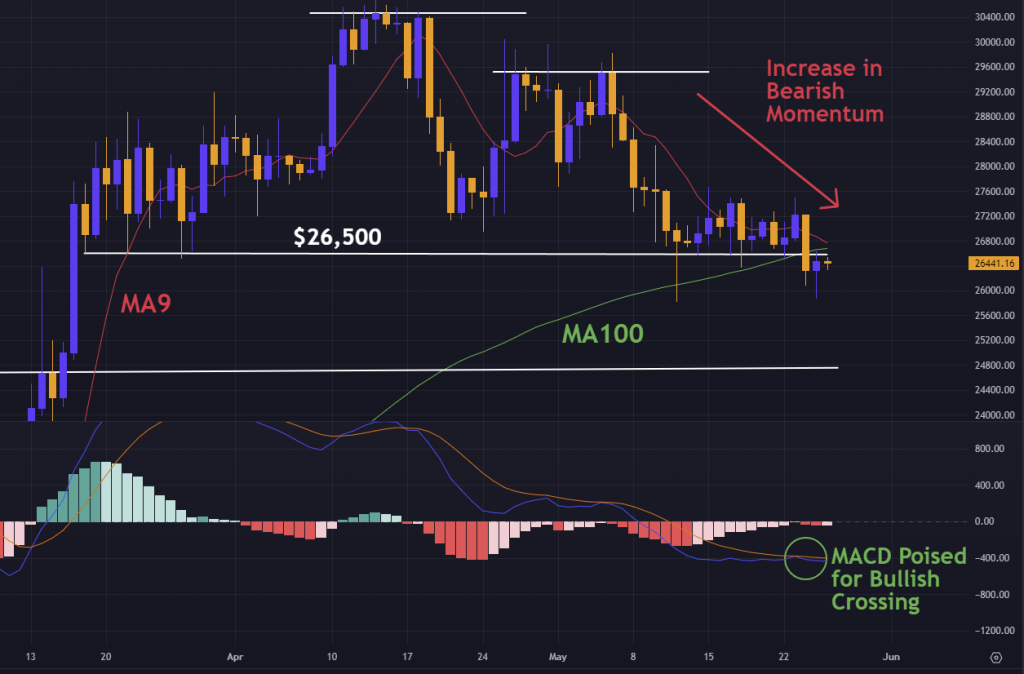
On Wednesday, the curtain lifted on the latest FOMC Meeting Minutes, revealing a surprising level of division among Fed members concerning potential interest rate hikes for the forthcoming meeting scheduled for June 14.
While unity and consensus often paint the picture within these meetings, this particular gathering has been marked by conflicting perspectives and a degree of uncertainty. A subset of members is now expressing increasing concerns about the risk of overtightening. These worries stem from the inherent lagging effect of rate hikes, a phenomenon that could inadvertently throttle economic growth if not judiciously managed. There’s a growing apprehension that pushing the rate increase button too hastily might kickstart a chain of events that could hamper the economy’s recovery. The tension is palpable as we approach the impending June meeting, and the markets wait with anticipation to see how this internal discord within the Fed will play out in their decision-making process. Will the calls for caution win the day, or will the voices advocating for tighter monetary policy take the reins? Only time will tell, adding another layer of anticipation and intrigue to the unfolding economic narrative.
In a landscape of differing views, there was a consensus among officials on one particular issue: the pressing need for a timely increase to the debt limit. Fed officials viewed this move as not just necessary but absolutely crucial in ensuring fiscal stability and maintaining the credibility of the nation’s economy. This unanimity in a divided climate highlights the gravity of the situation, reinforcing the importance of swift and decisive action to manage the looming debt ceiling crisis.
Meanwhile, there appears to be a high degree of market confidence that a deal can be found, even though there’s scant evidence to support this optimism. The market, like a chess player thinking several moves ahead, has already started factoring in the implications of what might transpire immediately after the deal is finalised. The anticipation is for both parties to reach a consensus soon, perhaps by the weekend, setting the stage for a crucial vote in both the House and Senate next week. However, this isn’t just any vote – it’s one that requires a bipartisan handshake, a rare spectacle in the world of modern American politics. Provided Congress backs the deal, likely pushing the debt ceiling out to 2025, the Treasury will then face a monumental task. It will need to swiftly restock its cash reserves, necessitating the issuance of a huge number of Treasury bills. To quantify, we’re talking about a staggering $500 billion that will be required immediately following the deal, further expanding to an eye-watering $1.2 trillion in the second half of 2023 alone. Alongside the continued Quantitative Tightening, this is likely to introduce a significant draw on liquidity, with the most evident impact being a hike in USD yields. We’re already seeing the initial ramifications with a sharp rise in yields across the curve. This escalation has subsequently bolstered the USD and exerted downward pressure on Gold prices.
From a technical perspective, the last market update highlighted that various technical indicators were suggesting an upcoming increase in bearish momentum for Bitcoin, which, as observed, indeed unfolded over the past fortnight. A significant point of interest to note is the $26,500 support level was recently breached, likely meaning that the attention of some traders will shift towards entering short positions. This is supported by the fact that MA9 and MA100 look poised for a bearish crossing. The MACD is another crucial indicator worth observing. Bucking the bearish narrative, the MACD line appears poised to ascend above its signal line, hinting at a potential bullish shift. Reflecting on the previous occurrence of such a crossover, Bitcoin notably soared from $22,000 to over $30,000.
As we stand on the brink of potentially transformative decisions from both the Federal Reserve and Congress, the market appears to be sailing into a sea of uncertainty. Will we witness a seamless navigation through these turbulent waters, or will we be caught in the storm of unexpected upheaval? Only the coming weeks will provide the answer.